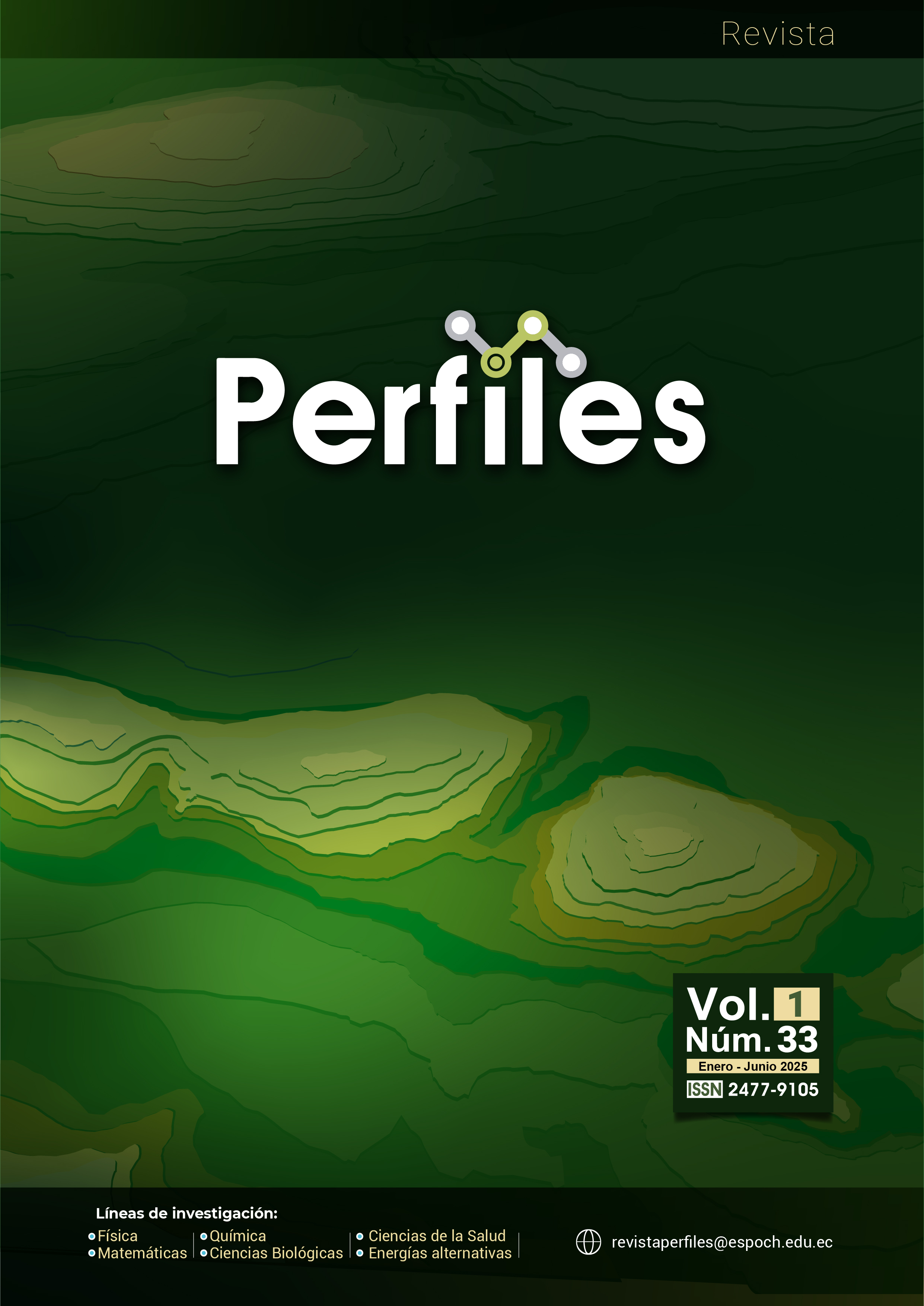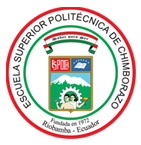Extraction of cellulose fibers from hemp stalk (Cannabis sativa L.) by chemical treatment for textile application
DOI:
https://doi.org/10.47187/perf.v1i33.317Keywords:
Hemp fiber, Alkaline hydrolysis, new textile materials, Alpha-cellulose contentAbstract
Natural cellulose fibers exhibit ideal properties for the development of innovative materials due to their sustainability, renewability, and low production cost. This study aims to obtain cellulose fibers from the bast of industrial hemp through oxidative alkaline hydrolysis followed by acid hydrolysis. The optimal conditions for maximizing alpha-cellulose content were determined through chemical characterization. The biomass underwent physical description, proximate analysis, and alkaline pretreatment to obtain the average percentage of usable bark (56.07 ± 0.002) %. An experimental design was conducted to evaluate alkali concentration (NaOH: 2–10% w/v), treatment time (30–120 min), and acid hydrolysis conditions. The obtained fibers were subjected to a physical evaluation of yield, color, and fiber release. Chemical characterization was performed using thermogravimetric analysis (TGA) to determine lignocellulosic composition and Fourier-transform infrared spectroscopy (FTIR) to confirm lignin removal through the functional groups of hemp fibers. Statistical analysis revealed that the optimal treatment conditions were 10% NaOH and 120 minutes of alkaline hydrolysis, resulting in an average alpha-cellulose content of 75.11 ± 1.08%.
Downloads
References
Flores-Sanchez IJ, Ramos-Valdivia AC. A review from patents inspired by the genus Cannabis. Phytochem Rev [Internet]. 2017 Aug 16;16(4):639–75. Available from: http://link.springer.com/10.1007/s11101-016-9485-x
Smith T. Hempology 101: The History and Uses of Cannabis Sativa. 4th ed. Smith T, editor. Vol. 1. Victoria, Columbia, Canadá: International Hempology 101 Society; 2012. 110–160 p.
Castrillon N. Sostenibilidad en la producción y el consumo de fibras textiles. El Telégrafo [Internet]. 2021 [cited 2024 Apr 21]. p. 1–3. Available from: https://www.eltelegrafo.com/2021/05/sostenibilidad-en-la-produccion-y-el-consumo-de-fibras-textiles/
Bekiaris G, Koutrotsios G, Tarantilis PA, Pappas CS, Zervakis GI. FTIR assessment of compositional changes in lignocellulosic wastes during cultivation of Cyclocybe cylindracea mushrooms and use of chemometric models to predict production performance. J Mater Cycles Waste Manag [Internet]. 2020 Jul 11;22(4):1027–35. Available from: http://link.springer.com/10.1007/s10163-020-00995-7
Shuvo II. Fibre attributes and mapping the cultivar influence of different industrial cellulosic crops (cotton, hemp, flax, and canola) on textile properties. Bioresour Bioprocess [Internet]. 2020 Dec 26;7(1):51–64. Available from: https://bioresourcesbioprocessing.springeropen.com/articles/10.1186/s40643-020-00339-1
Crini G, Lichtfouse E, Chanet G, Morin-Crini N. Applications of hemp in textiles, paper industry, insulation and building materials, horticulture, animal nutrition, food and beverages, nutraceuticals, cosmetics and hygiene, medicine, agrochemistry, energy production and environment: a review. Environ Chem Lett [Internet]. 2020 Sep 8;18(5):1451–76. Available from: https://link.springer.com/10.1007/s10311-020-01029-2
Johnson R. Hemp as an Agricultural Commodity. Congressional Research Service [Internet]. 2018 Jun 22;7–11. Available from: https://sgp.fas.org/crs/misc/RL32725.pdf
Dreyer J, Müssig J, Koschke N, Ibenthal WD, Harig H. Comparison of Enzymatically Separated Hemp and Nettle Fibre to Chemically Separated and Steam Exploded Hemp Fibre. J Ind Hemp [Internet]. 2002 Jan;7(1):43–59. Available from: http://www.tandfonline.com/doi/abs/10.1300/J237v07n01_05
Chernova TE, Mikshina PV, Salnikov VV, Ibragimova NN, Sautkina OV, Gorshkova TA. Development of distinct cell wall layers both in primary and secondary phloem fibers of hemp (Cannabis sativa L.). Ind Crops Prod [Internet]. 2018 Jul;117:97–109. Available from: https://linkinghub.elsevier.com/retrieve/pii/S0926669018302036
Neves ACC, Rohen LA, Mantovani DP, Carvalho JPRG, Vieira CMF, Lopes FPD, et al. Comparative mechanical properties between biocomposites of Epoxy and polyester matrices reinforced by hemp fiber. J Mater Res Technol [Internet]. 2020 Mar;9(2):1296–304. Available from: https://linkinghub.elsevier.com/retrieve/pii/S2238785419305708
Gallegos H. Aplicaciones de cáñamo como alternativa rentable a la reactivación económica de Ecuador tras la pandemia de COVID-19. Perfiles [Internet]. 2021 Jun 30;1(25):45–53. Available from: https://perfiles.espoch.edu.ec/index.php/perfiles/article/view/112
Amode NS, Jeetah P. Paper production from Mauritian hemp fibres. Waste Biomass Valor [Internet]. 2021 Apr 18;12(4):1781–802. Available from: https://link.springer.com/10.1007/s12649-020-01125-y
Rana SS, Gupta MK. Isolation of nanocellulose from hemp (Cannabis sativa) fibers by chemo-mechanical method and its characterization. Polym Compos [Internet]. 2020 Dec 21;41(12):5257–68. Available from: https://4spepublications.onlinelibrary.wiley.com/doi/10.1002/pc.25791
Duque Schumacher AG, Pequito S, Pazour J. Industrial hemp fiber: A sustainable and economical alternative to cotton. J Clean Prod [Internet]. 2020 Sep;268:1221–80. Available from: https://linkinghub.elsevier.com/retrieve/pii/S0959652620322277
Placet V, Day A, Beaugrand J. The influence of unintended field retting on the physicochemical and mechanical properties of industrial hemp bast fibres. J Mater Sci [Internet]. 2017 May 1;52(10):5759–77. Available from: http://link.springer.com/10.1007/s10853-017-0811-5
Jiménez Muñoz E, Prieto-García F, Prieto Méndez J, Acevedo Sandoval OA, Rodríguez Laguna R. Caracterización fisicoquímica de cuatro especies de agaves con potencialidad en la obtención de pulpa de celulosa para elaboración de papel. Dyna (Medellín) [Internet]. 2016 Jun 30;83(197):232–80. Available from: http://www.revistas.unal.edu.co/index.php/dyna/article/view/52243
Calderón Rojas C. Utilización de la fibra de cáñamo en la industria textil: Una nueva opción para la problemática de los cultivos ilícitos en Colombia. [Tesis de Ingeniería]. Bogotá: Universidad de los Andes; 2003 [cited 2024 Jun 18]. Available from: http://hdl.handle.net/1992/14014
Allegret S. The history of hemp. In: Bouloc P, Allegret S, Arnaud L, editors. Hemp: industrial production and uses [Internet]. UK: CABI Plant Protection Series; 2013. p. 4–26. Available from: http://www.cabidigitallibrary.org/doi/book/10.1079/9781845937935.0000
Kostic M, Pejic B, Skundric P. Quality of chemically modified hemp fibers. Bioresour Technol [Internet]. 2008 Jan;99(1):94–9. Available from: https://linkinghub.elsevier.com/retrieve/pii/S0960852406006419
López D. Elaboración artesanal de hilo de la fibra de formio (Phormium tenax) [Tesis de Ingeniería]. Quito: Escuela Politécnica Nacional; 2012.
Chandra RP, Chu Q, Hu J, Zhong N, Lin M, Lee JS, et al. The influence of lignin on steam pretreatment and mechanical pulping of poplar to achieve high sugar recovery and ease of enzymatic hydrolysis. Bioresour Technol [Internet]. 2016 Jan;199:135–41. Available from: https://linkinghub.elsevier.com/retrieve/pii/S0960852415012900
Manaia JP, Manaia AT, Rodriges L. Industrial Hemp Fibers: An Overview. Fibers [Internet]. 2019 Dec 2;7(12):106–18. Available from: https://www.mdpi.com/2079-6439/7/12/106
Pino O. Estudio de pre factibilidad para la creación de una empresa productora y procesadora de fibra de cáñamo industrial en la provincia de Pichincha para la exportación al mercado Alemán en el período 2019-2029 [Tesis de Licenciatura]. [Quito]: Pontificia Universidad Católica del Ecuador; 2019.
Xanthopoulou E, Chrysafi I, Polychronidis P, Zamboulis A, Bikiaris DN. Evaluation of Eco-Friendly Hemp-Fiber-Reinforced Recycled HDPE Composites. Journal of Composites Science [Internet]. 2023 Apr 4;7(4):138–43. Available from: https://www.mdpi.com/2504-477X/7/4/138
Fike J. Industrial Hemp: Renewed Opportunities for an Ancient Crop. CRC Crit Rev Plant Sci [Internet]. 2016 Nov 1;35(5–6):406–24. Available from: https://www.tandfonline.com/doi/full/10.1080/07352689.2016.1257842
Rasera GB, Ohara A, de Castro RJS. Innovative and emerging applications of cannabis in food and beverage products: From an illicit drug to a potential ingredient for health promotion. Trends Food Sci Technol [Internet]. 2021 Sep;115:31–41. Available from: https://linkinghub.elsevier.com/retrieve/pii/S092422442100409X
Gedik G, Avinc O. Bleaching of Hemp (Cannabis Sativa L.) Fibers with Peracetic Acid for Textiles Industry Purposes. Fibers and Polymers [Internet]. 2018 Jan 1;19(1):82–93. Available from: http://link.springer.com/10.1007/s12221-018-7165-0
Oliveira MAS, Pickering KL, Sunny T, Lin RJT. Treatment of hemp fibres for use in rotational moulding. Journal of Polymer Research [Internet]. 2021 Feb 20;28(2):53–78. Available from: https://link.springer.com/10.1007/s10965-021-02414-3
Arcos V. Desgomado de la fibra de Ramio (Boehmeria Nivea) mediante métodos químicos enzimáticos no tradicionales [Tesis de Ingeniería]. [Quito]: Universidad Politécnica Nacional; 2013.
Bleuze L, Lashermes G, Alavoine G, Recous S, Chabbert B. Tracking the dynamics of hemp dew retting under controlled environmental conditions. Ind Crops Prod [Internet]. 2018 Nov;123:55–63. Available from: https://linkinghub.elsevier.com/retrieve/pii/S0926669018305636
Viscusi G, Barra G, Gorrasi G. Modification of hemp fibers through alkaline attack assisted by mechanical milling: effect of processing time on the morphology of the system. Cellulose [Internet]. 2020 Oct 25;27(15):8653–65. Available from: https://link.springer.com/10.1007/s10570-020-03406-0
de Meijer EPM, van der Werf HMG. Evaluation of current methods to estimate pulp yield of hemp. Ind Crops Prod [Internet]. 1994 Feb;2(2):111–20. Available from: https://linkinghub.elsevier.com/retrieve/pii/0926669094900922
Hajiha H, Sain M, Mei LH. Modification and Characterization of Hemp and Sisal Fibers. Journal of Natural Fibers [Internet]. 2014 Apr 3;11(2):144–68. Available from: http://www.tandfonline.com/doi/abs/10.1080/15440478.2013.861779
Carrier M, Loppinet-Serani A, Denux D, Lasnier JM, Ham-Pichavant F, Cansell F, et al. Thermogravimetric analysis as a new method to determine the lignocellulosic composition of biomass. Biomass Bioenergy [Internet]. 2011 Jan;35(1):298–307. Available from: https://linkinghub.elsevier.com/retrieve/pii/S0961953410003314
Ahmed A, Hidayat S, Abu Bakar MS, Azad AK, Sukri RS, Phusunti N. Thermochemical characterisation of Acacia auriculiformis tree parts via proximate, ultimate, TGA, DTG, calorific value and FTIR spectroscopy analyses to evaluate their potential as a biofuel resource. Biofuels [Internet]. 2021 Jan 2;12(1):9–20. Available from: https://www.tandfonline.com/doi/full/10.1080/17597269.2018.1442663
Dai D, Fan M. Characteristic and Performance of Elementary Hemp Fibre. Materials Sciences and Applications [Internet]. 2010;01(06):336–42. Available from: http://www.scirp.org/journal/doi.aspx?DOI=10.4236/msa.2010.16049
Published
How to Cite
Issue
Section
License

This work is licensed under a Creative Commons Attribution-NonCommercial 4.0 International License.


























